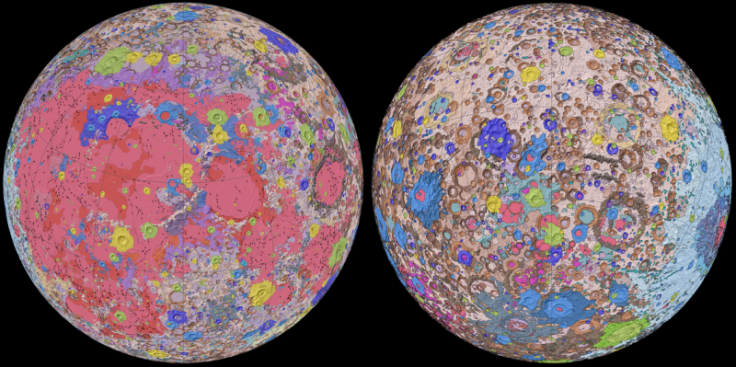The Moon has always been filled with mysteries, even with all of man's efforts to explore and discover its secrets. Recently, however, scientists have shared the work they called "Unified Geologic Map of the Moon," which is an authoritative geological map of the Earth's longest space companion.
The team, led by the United States Geological Survey's Corey Fortezzo, built the map using six old Apollo maps and some more updated satellite data. The map contains the names of features of the Moon, including data on its topology and information about rock layers and which ones are exposed on its surface.
Brought together by a common scientific goal
USGS research geologist James Skinner told Gizmodo these kinds of maps, and the ones they've made for Mars, and other cosmic bodies unite scientists from around the world by creating a common language of what could be expected in the area. Skinner hopes the map will become useful in conducting future missions that involve traversing the Moon.
The map is designed with a scale of 1:5,000,000 that lets scientists see the majority of the surface area while still giving accurate distances when following the scale. The system is founded on the six 2013 Apollo maps' "digital renovation" while also adding new information and data from the Lunar Reconnaissance Orbiter Wide Angle Camera and Lunar Orbiter Laser Altimeter.
The map is divided into several different sectors and is coded by color to separate geologic units. The colors represent different eras or times that the rocks belong to. As can be seen in the small sector, the yellow-colored areas depict the Copernican craters, which hail from the Copernican period that came from one billion years ago from today. The different shades of one color represent specific topographical information.

Read Also: NASA's Kepler Discovered Potential Second Earth; How Is It Different From Our Planet?
Discernability of a new compiled data and information system
Other maps of Luna have different uses in the field of science, such as showing dangerous areas and available resources that scientists could utilize to develop further studies. However, having a complete and detailed map of cosmic bodies is still long into the future.
The map they've designed is a summary of all data and information that scientists have gathered about the Moon to this day. It runs on a Geographical Information System (GIS), which allows additional information or data to be placed on top of it to update or add new layers to the currently existing map.
Skinner has explained that what they've created isn't the final version of the map, and as the years go by, more and more information may be collated on top of it to further improve upon what is already known about the Moon.
In the future, smaller sections of the cosmic body would require much more precise and higher-resolution maps to accurately show the details and innermost workings of the Moon's geology. The endeavor would allow future generations of scientists to have an easier time when conducting studies on the Moon by having a reliable and accurate map of the area.









